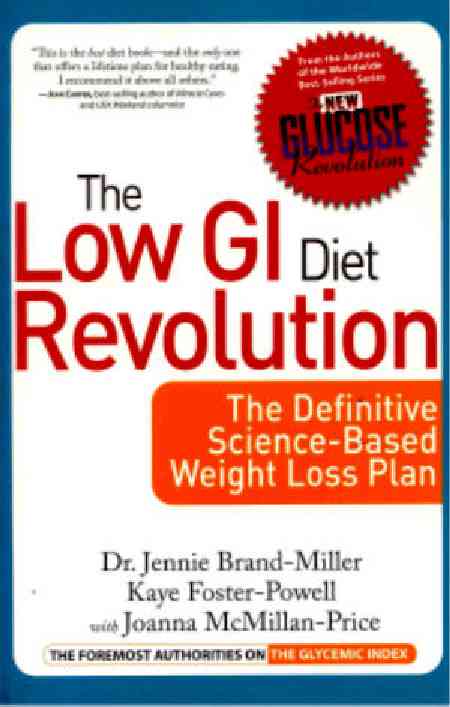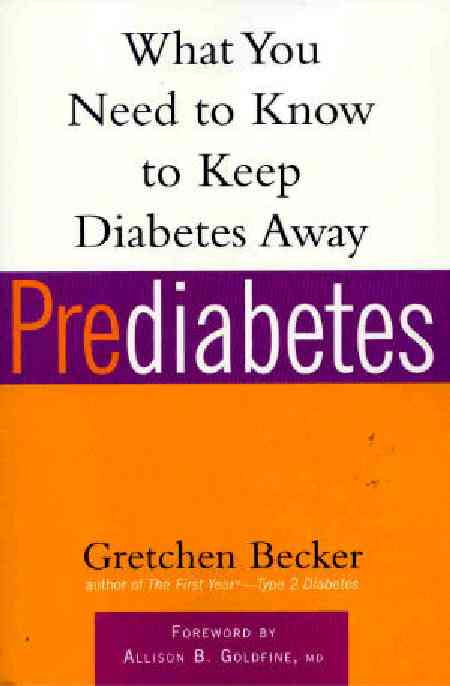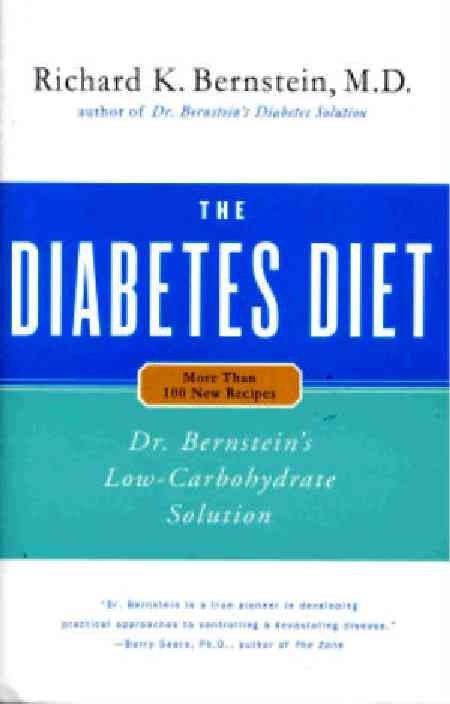
Fireweed at Trappers Lake, Colorado
This newsletter keeps you up-to-date with new articles, Web pages, and books that I have written about diabetes.
- I list and link most of these on my at Diabetes Directory and in the site’s menu.
- From time to time Diabetes Update may also include links to other Web pages of special interest.
My recent contributions are:
- The Mangosteen Myth
Have you ever heard of the marvels of mangosteen? If not, you can join the club. I never heard about it until last month. Among a multitude of other benefits, it is supposed to reduce blood glucose. So I investigated mangosteen. This article originally appeared December 25, 2004, on Mendosa.com as The Mangosteen Myth. - The Medicare Mystery
While the benefits of mangosteen may be purely a myth, how to take advantage of Medicare is for most of us a mystery. I do my best to unravel this riddle in my article that originally appeared in the December 2004 issue of Diabetes Health, which is now also online as The Medicare Mystery.
Update:
- Drug Interactions
Last month’s issue of Diabetes Update linked four websites that provide drug interactions. I asked readers for their opinions on these sites. Lynne Whaley carefully checked out and compared them and authorized me to reproduce her email here:I went to the four drug interaction check websites you suggested to do a down and dirty quick check of my meds, and thought I would give you my gut reaction to what I discovered.Another correspondent — an endocrinologist — reports that he uses what is apparently a great commercial site, the Thomson Micromedex DRUG-REAX System. Apparently his company provides this service for him, and he doesn’t know how much it costs. I don’t either, because the company would not tell me or even let me sign up for the generally-offered trial subscription. In fact, the local sales representative was so unwilling to let me write anything about the cost of this site that she said their attorneys would call. They haven’t yet. I guess they have enough business without us.Drugdigest.com was the least impressive of the four sites. I know a number of people who quickly scan a screen for what they are interested in, and may miss things, like instructions. This site would present a problem for the impatient scanner (like my husband!). Once instructions are read, the process of creating the list is quite straightforward and quick. The results were dismal — I take 5 prescription meds, and a number of over the counter supplements, and they only came up with one possible interaction (Lipitor/grapefruit) which is always noted on the prescription bottle.
Next in line would be the Discovery site. I found their search instructions to be most succinct, but their method of creating the list the most tedious. They returned 2 drug/food results, and 4 drug/drug results for what appears to be 6 total results. There was one “Moderate drug/food interaction” for Lipitor, but no further information, not even the food to watch out for. (I “ass-u-me” it is grapefruit.) There was one “Moderate drug/drug interaction” for ramipril/celecoxib, but again, no further information (found it elsewhere). In essence, I got back only 1 drug/food and 3 drug/drug results. Their results did not always include the physical effects of adverse interactions, or suggestions about contacting one’s physician. The information was not written in layman’s terms, which some might find off-putting. (Their information was fleshed out by Drugstore.com and Drugs.com.)
Drugstore.com comes next. Like Drugs.com they returned 5 drug interactions; 3 were drug/food and 2 were drug/drug. (All 5 of Drug.com’s results were drug/drug.) Two of the drug/food interactions are unlikely to occur since my prescription bottles always contain warnings about grapefruit (Lipitor) and alcohol (Glucophage). Unlike all three other sites, they listed the definition of “major,” “moderate,” and “minor” interactions at the end of the list, which I found helpful. While it is perhaps the most “readable” of the sites, 2 out of 5 possible drug/drug interactions just doesn’t get my vote.
Drugs.com gets my vote for best overall for the simple reason they returned the most (5 drug/drug) results. None of the drug/drug interactions are noted on my prescription bottles. My MD and pharmacist have never mentioned any of the possible problems of the combinations that I am taking, nor the cumulative effects that might be experienced, all of which were nicely laid out at Drugs.com.
I would suggest that anyone searching for information go to all four sites and compare notes; be a proactive consumer! What one site omits, another includes. The terminology of the sites is also different. Information which can be confusing at one site might be more clearly stated at another. The “major,” “moderate,” and “minor” ratings also varied from site to site. I tend to “get my shorts in a knot” if things look bad — seeing “major” on one site and “moderate” on another helps to lessen that “frenzy” down to “be aware and concerned.”
Book Reviews:
This is the best time of the year for publishers to bring out books on diet and diabetes. During the holidays many of us eat too much. And some of us make New Year’s resolutions to take better care of our bodies.
Maybe that’s why I have more books to review in this issue than ever before. Here are four of them:
- The Diabetes Diet
Right at the point where “Experts Say Low - Carb Craze May Be Over,” the leading advocate of low-carb diets for people with diabetes is coming out with his Diabetes Diet book.
That may be chutzpah, but the book’s author, Dr. Richard K. Bernstein, has earned it. He personally has followed and prescribed a low-carb diet many years before it became a fad.
And now that the fad appears to be dying, Dr. Bernstein remains its staunched — and most radical — supporter. Even the very title of his new book, The Diabetes Diet, reflects his audacity.
His diet must be the most austere of any low-carb regime. Most foods advertising as low-carb fail by his standards.
He even rejects the glycemic index. It “is at best flawed and misleading,” he maintains. “[T]he glycemic index…is a subjective rather than objective evaluation of the speed of the action of carbohydrate on blood sugar,” is, I believe, the most outrageous statement in this book. If there is any objective and scientific approach to what to eat, it has to be the glycemic index and glycemic load.
While Dr. Bernstein has staked out his claim by publishing his diet recommendations in a separate book for the first time, the world is marching on. Here’s the key statistic: This September just 4.6 percent of Americans were following what they said was a low-carb diet, according to Melanie Warner’s article, “Is the Low-Carb Boom Over?” in the December 5 issue of The New York Times. The newspaper says this is down from 9 percent in January, according to the NPD Group, a research firm. (Sorry that I had to use a secondary source, but the NPD Group says that they won’t sell me this report for less than $15,000.)
This doesn’t prove that Dr. Bernstein’s diet doesn’t work. But few of us are so desperate that we will follow it.
Little, Brown in New York and Boston will publish The Diabetes Diet on January 3. This 291-page hardcover book lists for $24.95. ISBN 0316737844.

The American Edition
- The Low GI Diet Revolution
Published four months ago in Australia and reviewed here at that time, this book by the world’s foremost authorities on the glycemic index, is in my opinion the diabetes diet. It is also a weight-loss diet, the emphasis of this book.A low-GI diet is a science-based healthy medium between a low-fat and a low-carb diet. It reduces insulin levels without the harmful potential of these other diets.
Currently the #1 bestselling diet in Australia, The Low GI Diet Revolution shows you how to make smart carbohydrate choices. Built around a 12-week action plan, this book also includes recipes and a table of foods tested for their glycemic indexes.
Marlowe & Company in New York will publish The Low GI Diet Revolution January 24. ISBN: 1569244138. This 301-page trade paperback lists for $15.95.

For Your Family
- Prediabetes
It’s too late for you and me and the author of this book. But you can do members of your family a big favor if you give them a copy of Prediabetes: What You Need to Know to Keep Diabetes Away. This is the revised and expanded edition of Stop Diabetes published two years ago and reviewed here at http://www.mendosa.com/diabetes_update_49.htm.Just before the publication of Stop Diabetes the U.S. Department of Health and Human Services and the American Diabetes Association began to use the new term “pre-diabetes” to describe the condition in which blood glucose levels are higher than normal but not yet diabetic — also known as impaired glucose tolerance or impaired fasting glucose. Studies show that most people with this condition go on to develop type 2 diabetes within 10 years.
Prediabetes is a lot better name than impaired glucose tolerance or impaired fasting glucose. It’s also a lot better name than Stop Diabetes (even though the usual style is to hyphenate it as pre-diabetes). As far as I know, this is the only popular book out there at the moment that is specific to pre-diabetes.
Gretchen’s mantra is “eat less and move more.” It’s a great way to focus all of us with diabetes or pre-diabetes alike on the essentials of control.
But Gretchen now believes that for people with pre-diabetes just “eating less and moving more may not be enough.” She writes me that “people with prediabetes should be willing to do more than people who might not actually be at risk.”
Therefore, she added three new tips (numbers 1 through 3 of the 50 great tips in this important book). That’s the same number of tips she had in Stop Diabetes, since she deleted three of the least important.
Disclosure: Gretchen Becker and I have worked together for years and I consider her a friend. I also consider her one of the very best writers about diabetes (and pre-diabetes). Her The First Year — Type 2 Diabetes is one of the two best books ever written about diabetes.
Marlowe & Company in New York will publish Prediabetes January 15. ISBN 1569244642. This 200-page trade paperback lists for $14.95.

International Textbook of Diabetes Mellitus
- International Textbook of Diabetes Mellitus
You have to feel sorry for students nowadays. Many of them use wheeled carts rather than daypacks to carry their books because they are so heavy.I would guess that few of these books are heavier than the International Textbook of Diabetes Mellitus. The publisher, Wiley, a few days ago kindly sent me a review copy. This book is so big — 1980 large pages — that they had to divide it into two volumes. Together they weigh 15 pounds.
This book is in fact so big that it took 4 editors-in-charge, 11 section editors, and 222 contributors to write its 116 chapters (or articles). All of the contributors are well-respected academics and doctors. That’s probably why they didn’t ask me to contribute.
Still, the book mentions mendosa.com at least six times. The article on “Computer-assisted Diabetes Education and Information Technology in Diabetes Care” by Dr. Eldon Lehmann of St. Bartholomew’s Hospital and Imperial College in London, U.K., refers to my Software page. Dr. Lehmann developed an outstanding and free software program, called AIDA, to simulate the effects of changes in insulin and diet on your blood glucose profile. I mirror his interactive educational diabetes/insulin tutorial on my site.
This is the third edition of this truly International Textbook. Encyclopedic in scope, it is the most complete and wide-ranging work on diabetes, covering all aspects of diabetes in a multidisciplinary approach. Sections covered include epidemiology, diagnosis, pathogenesis, management and complications of diabetes, and public health issues worldwide. It incorporates a vast amount of new data regarding the scientific understanding and clinical management of this disease.
Besides Dr. Lehmann’s software article, I found the articles on new drugs, insulins, meters, exercise, and screening to be the most interesting, reflecting, of course, my personal interests.
Aside from the needs of students, this is a reference work, best reviewed in a library. One reason you may not wish to buy it yourself is the price: $510. And that is not a typo. ISBN 0471486558.
For more information see http://www.wiley.com/legacy/wileychi/itdm/.

The Diet?
Announcements:
- HTML Format
I send out Diabetes Update e-mail in HTML format, which all Web browsers and most modern e-mail programs can display. HTML has live links to all the sites named in the text so that with a simple click of a mouse you can connect to the site you have just been reading about. - My Guarantee
This newsletter is free. Nor will I ever sell, rent, or trade your e-mail address to anyone.
Archives:
I now send out Diabetes Update once a month. Previous issues are online:
- Diabetes Update Number 1: Diabetes Genes of December 10, 2000
- Diabetes Update Number 2: DiabetesWATCH of December 18, 2000
- Diabetes Update Number 3: Starlix of January 3, 2001
- Diabetes Update Number 4: Native Seeds/SEARCH, Tepary Beans of January 17, 2001
- Diabetes Update Number 5: Insulin Makes You Fat of January 31, 2001
- Diabetes Update Number 6: Available and Unavailable Carbohydrates of February 15, 2001
- Diabetes Update Number 7: Dates of March 1, 2001
- Diabetes Update Number 8: Quackwatch of March 15, 2001
- Diabetes Update Number 9: The Cost of Insulin of March 30, 2001
- Diabetes Update Number 10: Sof-Tact Meter of April 2, 2001
- Diabetes Update Number 11: iControlDiabetes of April 16, 2001
- Diabetes Update Number 12: Cinnamon, Tagatose of May 2, 2001
- Diabetes Update Number 13: Glycemic Index of May 15, 2001
- Diabetes Update Number 14: Eat Your Carrots! of May 31, 2001
- Diabetes Update Number 15: Glycemic Load of June 21, 2001
- Diabetes Update Number 16: Homocysteine of July 2, 2001
- Diabetes Update Number 17: Chana Dal Tips of July 15, 2001
- Diabetes Update Number 18: Lag Time in AlternativeLand of August 2, 2001
- Diabetes Update Number 19: Fiber of August 15, 2001
- Diabetes Update Number 20: How Diabetes Works of August 30, 2001
- Diabetes Update Number 21: Insulin Resistance of September 14, 2001
- Diabetes Update Number 22: Trans Fats, Honey, CU of October 1, 2001
- Diabetes Update Number 23: Pedometer Power of October 15, 2001
- Diabetes Update Number 24: Is Glycerin a Carbohydrate? of October 31, 2001
- Diabetes Update Number 25: Kill the Meter to Save It of November 15, 2001
- Diabetes Update Number 26: Protein, Fat, and the GI of December 1, 2001
- Diabetes Update Number 27: Insulin Index of December 14, 2001
- Diabetes Update Number 28: Fructose of January 4, 2002
- Diabetes Update Number 29: Aspirin of January 14, 2002
- Diabetes Update Number 30: Stevia of January 31, 2002
- Diabetes Update Number 31: Gretchen Becker’s Book of February 19, 2002
- Diabetes Update Number 32: The UKPDS of March 4, 2002
- Diabetes Update Number 33: Financial Aid of March 18, 2002
- Diabetes Update Number 34: Pre-Diabetes of April 1, 2002
- Diabetes Update Number 35: More Glycemic Indexes of April 15, 2002
- Diabetes Update Number 36: Gila Monsters of April 30, 2002
- Diabetes Update Number 37: Is INGAP a Cure? of May 15, 2002
- Diabetes Update Number 38: Native American Diabetes of June 3, 2002
- Diabetes Update Number 39: FDA Diabetes of June 19, 2002
- Diabetes Update Number 40: Diabetes Support Groups of July 1, 2002
- Diabetes Update Number 41: New GI and GL Table of July 15, 2002
- Diabetes Update Number 42: Diabetes Sight of August 1, 2002
- Diabetes Update Number 43: DrugDigest of August 18, 2002
- Diabetes Update Number 44: Hanuman Garden of September 3, 2002
- Diabetes Update Number 45: Guidelines of September 16, 2002
- Diabetes Update Number 46: Trans Fat of October 4, 2002
- Diabetes Update Number 47: Nutrition.Gov of October 16, 2002
- Diabetes Update Number 48: Our Hearts of October 31, 2002
- Diabetes Update Number 49: Our Kidneys of November 15, 2002
- Diabetes Update Number 50: A1C<7 of December 2, 2002
- Diabetes Update Number 51: Diabetes Searches with Google of December 16, 2002
- Diabetes Update Number 52: e-Patients of January 2, 2003
- Diabetes Update Number 53: Email News of January 16, 2003
- Diabetes Update Number 54: Third Generation Meters of January 31, 2003
- Diabetes Update Number 55: Hypoglycemic Supplies of February 14, 2003
- Diabetes Update Number 56: Food Police of March 1, 2003
- Diabetes Update Number 57: Vitamins of April 1, 2003
- Diabetes Update Number 58: Lancets of May 1, 2003
- Diabetes Update Number 59: Accurate Meters of June 1, 2003
- Diabetes Update Number 60: Chromium of July 1, 2003
- Diabetes Update Number 61: Traveling of August 1, 2003
- Diabetes Update Number 62: My Book of September 1, 2003
- Diabetes Update Number 63: Hot Tubs of October 1, 2003
- Diabetes Update Number 64: Home A1C Testing of November 1, 2003
- Diabetes Update Number 65: Detemir of December 1, 2003
- Diabetes Update Number 66: Erectile Dysfunction of January 1, 2004
- Diabetes Update Number 67: Acidic Foods of February 1, 2004
- Diabetes Update Number 68: Net Carbs of March 1, 2004
- Diabetes Update Number 69: Glycemic Index of April 1, 2004
- Diabetes Update Number 70: Dreamfields Pasta of May 1, 2004
- Diabetes Update Number 71: Cholesterol of June 1, 2004
- Diabetes Update Number 72: Meter News of July 1, 2004
- Diabetes Update Number 73: Pill Splitting of August 1, 2004
- Diabetes Update Number 74: GlucoMON of September 1, 2004
- Diabetes Update Number 75: Coding of October 1, 2004
- Diabetes Update Number 76: Sleep Apnea of November 1, 2004
- Diabetes Update Number 77: Keynote Address of December 1, 2004



